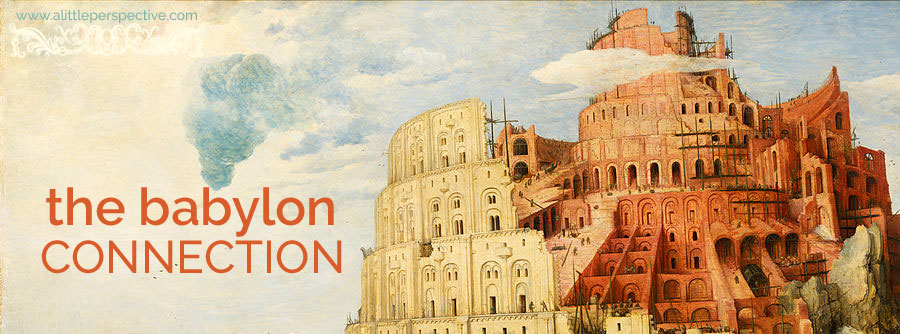the babylon connection
the babylon connection, part two
the babylon connection, part three
the babylon connection, part four
the babylon connection, part five
the babylon connection, part six
the babylon connection, part seven
the babylon connection, part eight
the babylon connection, part nine
the babylon connection, part ten
the babylon connection, part eleven
the babylon connection, part twelve
We have been discussing the evidence brought out by Bryant in Ancient Mythology, for the origin of paganism at Babel by Nimrod, as Josephus asserts. In the first volume, in the first two- thirds of the book Bryant discusses the syllables which form the most ancient names of places and deities, and their meanings. We have touched on some of this already: that On, for example, was a Hamite term for the sun; and that the Hamites worshiped their ancestor Ham as Am-On, or Amon (the principal Egyptian deity), meaning Ham the Sun.
By this study, Bryant was able to trace place names (and deity names) from all over the Middle East and Europe to their original meanings as sacred places for the worship of the religion which Nimrod founded. All this is supported by evidence from the ancient Greek writers on those places and their customs as brought out in their poetry, mythology, and philosophy. The detail Bryant employs in proving this case is incredible and varied. The depth of his inquiry is impossible to relate simply; but anyone interested can read Byrant’s study into etymology for themselves. His first volume has been posted on the Internet.
The last third of the first volume is a description of Nimrod’s religion as practiced almost universally in ancient times in these places. Evidence of the same religious rites, sacred and temple sites, customs and practices are found throughout Europe, Egypt, Syria, and Persia.
Characteristics of Nimrod’s religion include the worship of fire, as a representation here on earth of the property thought to emanate from the sun, their chief deity. This worship was especially undertaken in caves and caverns, for a cave was supposed to model the earth or universe at night. The “night” of the cavern is then enlightened by the fire, as the sun enlightens the world. Temples and oracles (such as the famous one at Delphi) were situated at caves or caverns because of their association with fire and sun worship. Mountains which contained numerous caves were considered especially sacred (such as Parnassus), as were volcanoes, or any fissure, stream, lake, river, or fountain which emanated heat, steam, noxious fumes, minerals or any unusual quality.
Bryant relates a history of some of the Mohammedans of Khandahar (Afghanistan) in which they enter caverns for extended times with fasting and bodily afflictions to gain spiritual enlightenment. This shows that even among the Muslims in his day the original pagan practices were still in use. Jupiter, or Zeus, was said by the Greeks to have been nursed in a cave. Mithras, a Persian deity much regarded among the Romans, was said to be born in a cave, which were sacred to him. To be continued …
the babylon connection, part fourteen
the babylon connection, part fifteen
the babylon connection, part sixteen
